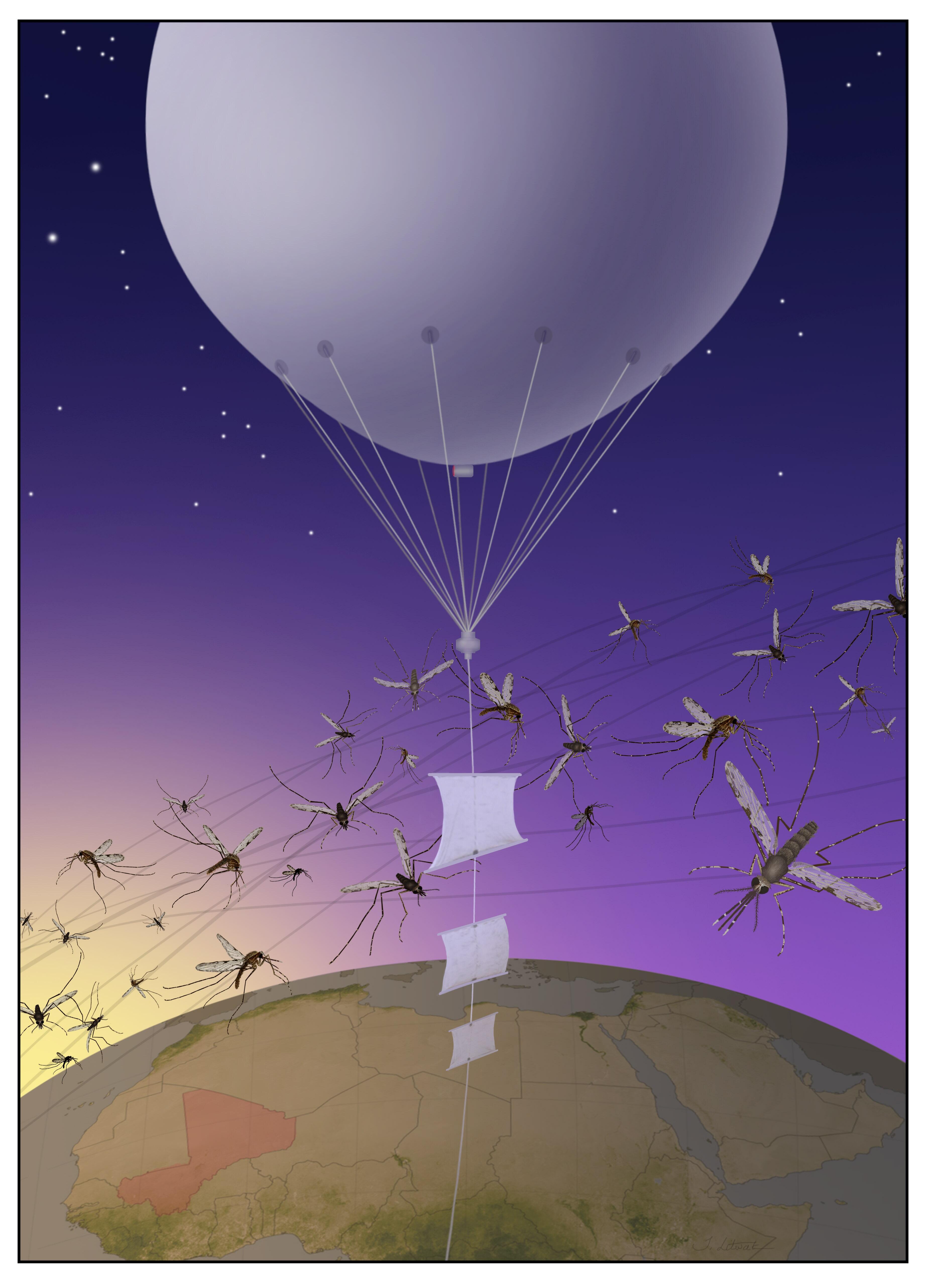
LSTM researchers have been part of a team that has provided evidence, for the first time, about the long-distance migration of malaria mosquitoes in Africa, the results of which are published in the journal Nature.
In the arid areas of the African Sahel region, which border the Sahara, malaria is extremely seasonal with a complete absence of water over vast areas for mosquito breeding during the long dry season, during which adult mosquitoes apparently disappear completely.
Yet upon resumption of rains, Anopheles mosquitoes (and malaria) return quickly. The source of these malaria vectors is a long-standing mystery in malaria ecology.
One hypothesis, backed by some prior evidence, is local hibernation throughout the dry season, but this only seems applicable to a single species of the malaria vector community. Long-distance migration was given little credence because mosquitoes are thought to fly close to the ground and only for short distances. The current work based in villages in the Sahel of Mali around which there is no known surface water for over 100 km provides compelling evidence to overturn this dogma.
The research team led by Tovi Lehmann (NIAID) and the Malian research team used helium balloons rising hundreds of metres above ground with sticky traps attached at different heights to collect insects on high altitude air currents. With molecular entomology support from LSTM researchers to identify the mosquitoes species captured, this innovative sampling methodology unequivocally demonstrated the importance of high-altitude dispersal for rapid recolonization of the area.
By meteorological modelling of prevailing air currents, Anopheles mosquitoes, including the main malaria vectors, were shown to have travelled up to 300 km (i.e. from neighbouring countries) also as a near continuous nightly flow in huge numbers.
Interestingly, the sampling found a significant bias toward female mosquitoes, of which almost a third had fed on human blood and were thus capable of bringing malaria parasites suggesting that the migration is an active decision rather than a chance event for mosquitoes caught up in air currents.
LSTM’s Dr David Weetman said: “Especially in our era of malaria elimination targets, this re-writing of the rulebook on vector migration to include invaders from well beyond country borders will require much greater regional coordination of malaria control programmes.”
Windborne long-distance migration of malaria mosquitoes in the Sahel, Nature, 2 October 2019